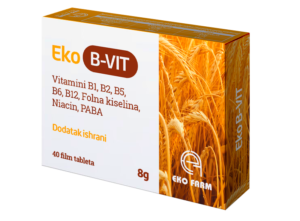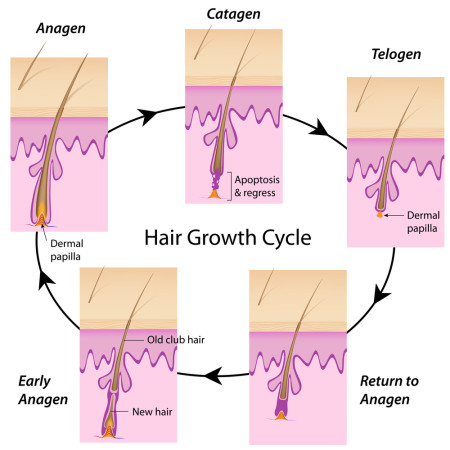A few facts about hair
Let’s start with the hair composition
The hair growth cycle
Impact of aging on hair appearance and growth (internal factors)
Impact of diet on hair appearance and growth
Impacts of medications on hair appearance and growth
Effects of enviromental factors on hair appearance and growth
Maintaining the healthy hair appearance – tips for hair care
A few facts about hair
Hair is one of the main features that accompany us since our early childhood. As we grow, our hair grows and changes too, passing through several different stages. It is a known fact that all hair follicles (the incredible 5 million!) on our body get formed by the 22nd week of pregnancy. One hundred thousand of those follicles are residing on the scalp area. This also represents their greatest number, considering that our body does not have the ability to produce new hair follicles in the further course of our life. Three characteristics that are susceptible to change, on the other hand, are color, density and speed of hair growth. Unfortunately, as we get older all three characteristics clearly lose their intensity.
Let’s start with the hair composition
Living part of the hair – the follicle, is “tucked in” into the structure of the skin, where it receives all the necessary nutrients through a tangle of blood vessels placed in the dermal papilla. The root of the hair follicle, in addition to the papilla, consists of stem cells (responsible for hair growth), sebaceous glands (responsible for sebum secretion), and hair-elevating muscles (musculus arrector pili), which allow us to get goose bumps. Another part of our hair that is visible above the skin – the shaft, does not possess any biological activity, and it is often described as a “dead” structure.
The primary component of hair fiber is keratin, a protein built from long chains of amino acids, mostly cysteine. Precisely because of this amino acid hair has a large amount of sulfur, which builds the so-called “disulfide” chemical bonds, giving the hair great strength and durability. It is estimated that a single strand of hair could hold up to 100g in weight, which would be around staggering 12 tons, counting the whole hair! The amount of disulfide bonds in the hair imposes differences in the appearance of its cross-section, determining the hair type – is it going to be straight, wavy or curly. According to this, straight hair has a regular, circular cross-section, and a small number of disulfide bonds, which is directly opposite to wavy and curly hair.
The hair growth cycle
Human hair grows in cycles, whose lenghts are genetically determined.
First in line is the anagen phase, which usually lasts from 2 up to 6 years. About 90% of all hair follicles on the scalp are in this active, growing phase. Interestingly, the length of all the hair on our body depends greatly on the duration of this phase. In case of scalp hair anagen phase lasts up to 6 years, allowing the hair to grow longer, unlike eyebrows hair, whose anagen phase lasts much shorter (around 4 months), limiting their overall length.
Next in line is the catagen phase, also known as the short transition stage, which lasts only 2 to 3 weeks and includes less than 1% of the hair. During this phase, the hair follicle is reduced to 1/6 of its length, separating itself from the dermal papilla, consequently interrupting the flow of all the needed nutrients.
Last in line is the telogen phase, which includes 10 to 15% of the hair, whose follicles are resting for a period of 1 to 4 months. During this phase men and women lose on average 25-100 strands of hair on a daily basis, which is considered normal. Most of those strands are commonly lost during combing or washing of the hair. However, everything over that number is interpreted as increased hair loss and indicates a potential health problem, which should be solved as soon as possible. After completed telogen phase, the follicle re-connects with dermal papilla (its source of nutrients), creating the conditions for the start of a new hair growth cycle.
Impact of aging on hair appearance and growth (internal factors)
Several major characteristics of young men’s and women’s hair are rapid growth, high density and good hair pigmentation. However, by entering into more mature years, all three characteristics clearly lose intensity.
Until recently, researchers taught one of the main causes of hair loss was an increased activity of DHT (dihydrotestosterone), the active metabolite of testosterone, in our body. However, recent studies suggest that many other factors contribute to the progress of this process, of which we should mention several most significant:
Emergence of “miniaturized” hair follicles, which are normally formed during the telogen phase of hair growth. As we age, the duration of telogen phase tends to get longer at the expense of the anagen phase, which becomes shorter. As a result, an increasing number of miniaturized follicles remain in the anagen phase, which leads to the formation of thin hair strands that grow more slowly. That is the reason why we use numerous regenerators, which coat our hair with lipids and proteins, giving it a fuller and healthier appearance.
Adequate follicle microcirculation is an important requirement for the growth of healthy hair and represents another factor that affects its loss. Morphological examination of the scalp hair of elderly people shows a deficit of blood supply to already weakened follicles, which contributes to their further decline. Researchers also revealed the existence of auto-immune inflammatory process around the hair follicles, which is believed to represent the final step in the cascade that leads to the loss of their functionality.
Reduction of subcutaneous adipose tissue is also a potential factor that contributes to hair loss. It has been discovered that accumulated cells of adipose tissue provide support and thereby maintain the structure of healthy hair follicles. Conditions connected to a sudden reduction of these fatty deposits, such as the implementation of rigorous diets, are almost without exception associated with a decline of hair quality.
Impact of diet on hair appearance and growth
Well-balanced diet is a factor that greatly affects the appearance of human hair, as well as the rest of the body. Knowing that our hair is in highest percentage made out of keratin, which is a protein by structure, we can conclude that having a protein rich diet is essential to our hair.
Eating foods rich in protein that contain all 9 essential amino acids, such as tuna, turkey, chicken and veal, eggs, soy, beans and a large number of dairy products is highly recommended. In addition to the amino acids, omega-3 polyunsaturated fatty acids found in high percentage in flaxseed and fish oils (especially salmon oil, menhaden, sardines and cod), sesame, pumpkin and chia seeds, walnuts and seafood, also contribute to the quality of the hair. Foods rich in iron, zinc, vitamin D and B complex vitamins have positive impact on the hair growth cycle, and should be on our menu regularly.
Impacts of medications on hair appearance and growth
Certain medications can contribute to increased hair loss, as well as change in color and texture of the hair, which could greatly affect our self-esteem. Fortunately, in most cases, these changes are reversible, which means they fully relieve after completing the therapy. Drugs that can cause increased hair loss include some groups of antidepressants, anticoagulants, antifungal drugs, oral contraceptives, antiepileptics, antihypertensives, retinoids, steroids, immunosuppressants and cytostatic agents.
Effects of enviromental factors on hair appearance and growth
Everyday activities such as frequent use of aggressive cosmetic products for washing, styling or hair coloring, as well as repeated exposure to high temperature through excessive hair drying or using hair straighteners, could damage the scalp and hair follicles to a significant extent. This all becomes noticeable especially as we enter the fourth decade of life. That is why we should start nourishing our hair on time, and spare it from damaging and incompetent hair cosmetic treatments.
Maintaining the healthy hair appearance – tips for hair care
As previously mentioned, properly balanced diet is one of the main factors responsible for the appearance of our hair. It is important to highlight that diet is a necessary, but not sufficient requirement if we want to have hair with all desired characteristics. This means that, in addition to following dietary advice, we have to take care about hair nourishment too. Processes such as hair washing, combing, styling, coloring, drying, or straightening, accompanied by shampoo, conditioner or mask selection, should not be taken lightly, for it depends on them how we will manage to preserve our hair.
Moreover, we should take into account the origin of the sources of information, in terms of advice on diet and hair care. Preference should always be given to the proven, professional on-line or written literature sources, as well as medically trained personnel in the field of nutrition, bromatology, trichology and dermatology in general.
Although they do not carry along an instant solution for strength, vigor or shine of the hair, rational use of dietary supplements, followed by a balanced diet and previously mentioned guidelines, may significantly increase the quality of all characteristics of a healthy and attractive hair. In this regard, a positive impact on hair may have supplements that contain:
MSM (methyl-sulfonyl-methane) – Human hair is made out of strands, composed of as many as 35% of amino acids that contain sulfur. For this reason, as a result of sulfur donor deficiency in our body, fraying and thinning of the hair occur. MSM (methyl-sulfonyl-methane) is a supplement that reimburses sulfur content, restoring hair’s shine and density.
Vitamin B Complex – B complex vitamins, such as B3 (niacin), B5 (pantothenic acid), B6 (pyridoxine), vitamin B12, biotin and folic acid, have positive effect on hair follicles. They play an important role in the metabolism of amino acids that make up keratin, the most common protein in the structure of our hair.
Iron, zinc, selenium, copper, magnesium, vitamins D, E, C – They all have positive influence on hair growth cycle, as well as protein metabolism.
by: mr ph Iva Majstorović, posted on December 17, 2015
References
1. Lee LD, Baden HP. Chemistry and composition of the keratins. Int J Dermatol. 1975 Apr;14(3):161-71.
2. Yu J, Yu DW, Checkla DM, Freedberg IM, Bertolino AP. Human hair keratins. J Invest Dermatol. 1993 Jul;101(1 Suppl):56S-59S.
3. Baden HP. Biochemistry of hair protein. Clin Dermatol. 1988 Oct-Dec;6(4):22-5.
4. Pickart L. Improving Hair Growth with Skin Remodeling Copper Peptides. Cosmetics & Medicine 2004; (7); London’s Body Language: Dermatology Journal 2004;.
5. Science of Hair: Hair Growth Cycle & How Hair Works
http://www.webmd.com/skin-problems-and-treatments/hair-loss/science-hair
6. Aging changes in hair and nails – National Library of Medicine
https://www.nlm.nih.gov/medlineplus/ency/article/004005.htm
7. Secrets of human hair.
http://www.theguardian.com/uk/2004/may/27/sciencenews.research
8. Curly hair gene.
http://www.bio.davidson.edu/courses/genomics/2011/Piper/Background.html
9. Paus R; Cotsarelis G (August 1999). “The biology of hair follicles”
http://www.nejm.org/doi/full/10.1056/NEJM199908123410706
10. USDA National Nutrient Database: Nutrients – Cystine (g)
http://ndb.nal.usda.gov/ndb/nutrients/report/nutrientsfrm?max=25&offset=0&totCount=0&nutrient1=507&nutrient2=&nutrient3=&subset=0&fg=&sort=c&measureby=m
11. Tosi A, Misciali C et al. Drug-induced hair loss and hair growth. Incidence, management and avoidance.
http://www.ncbi.nlm.nih.gov/pubmed/8018303
 Eko B-Vit is a dietary supplement in the form of film coated tablets, that contain all eight essential B complex vitamins. You may wonder why all eight? Because, thanks to the synergistic effect, only in this exact composition these vitamins may achieve their full effect, which is participating in a number of metabolic processes, which helps create energy for the functioning of all tissues from ingested food.
Eko B-Vit is a dietary supplement in the form of film coated tablets, that contain all eight essential B complex vitamins. You may wonder why all eight? Because, thanks to the synergistic effect, only in this exact composition these vitamins may achieve their full effect, which is participating in a number of metabolic processes, which helps create energy for the functioning of all tissues from ingested food.

